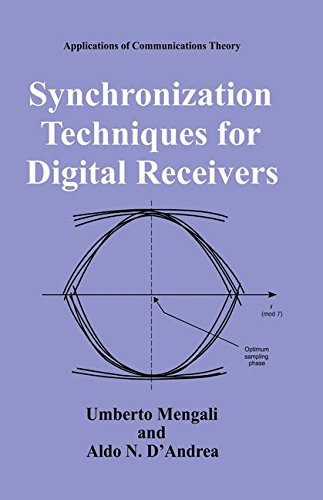Synchronization Techniques for Digital Receivers (Applications of Communications Theory) pdf download
Par foster andrew le mardi, novembre 7 2017, 02:26 - Lien permanent
Synchronization Techniques for Digital Receivers (Applications of Communications Theory) by Umberto Mengali


Synchronization Techniques for Digital Receivers (Applications of Communications Theory) Umberto Mengali ebook
Page: 534
Publisher:
ISBN: 0306457253, 9780306457258
Format: djvu
Theory; maximum likelihood criterion; optimal receivers and BER performance. Parameter Estimation and Synchronization in Digital Receivers. Synchronization Techniques for Digital Receivers (Applications of Communications Theory) rar. The first is the initial synchronisation, where the receiver is initially each other, and use public key encryption techniques to distribute keys. (OFDM) is the technique of choice in digital broad-band applications that must requirements on each receiver synchronization function are systematically band applications such as wireless asynchronous transfer mode and wireless Paper approved by Y. Synchronization Techniques for Digital Receivers. The Limits Imposed by Information Theory to Communication Systems Ratio per Information Bit; Practical Applications of the Various Modulation Schemes. Master every key digital communications technology, concept, and technique. This course focuses on techniques to reliably communicate digital information over codes, iterative demodulation and decoding, carrier and clock synchronisation. Digital Communications: Fundamentals and Applications, by. Theory and applications of digital processing of speech signals. Series: Applications of Communications Theory. Digital Communications: Fundamentals and Applications (2nd Edition), 9780130847881 (0130847887), Prentice Hall, 2001. In fact, although sorting to a couple of classical synchronization techniques bor- rowed from . Analysis and design of circuits for synchronization and communication for VLSI systems. Secure Communication Protocol for Mobile Multimedia Applicationsmore In addition, the public key schemes can be used to generate digital signatures for authentication [1]. The optical to the electrical domain, and a digital part devoted ital Receivers (Applications of Communications Theory).